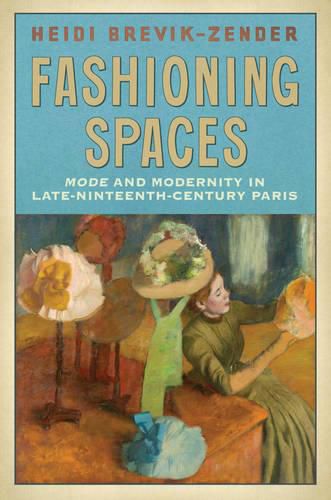Readings Newsletter
Become a Readings Member to make your shopping experience even easier.
Sign in or sign up for free!
You’re not far away from qualifying for FREE standard shipping within Australia
You’ve qualified for FREE standard shipping within Australia
The cart is loading…






In Fashioning Spaces, Heidi Brevik-Zender argues that in the years between 1870 and 1900 the chroniclers of Parisian modernity depicted the urban landscape not just in public settings such as boulevards and parks but also in dislocations, spaces where the public and the intimate overlapped in provocative and subversive ways. Stairwells, theatre foyers, dressmakers’ studios, and dressing rooms were in-between places that have long been overlooked but were actually marked as indisputably modern through their connections with high fashion. Fashioning Spaces engages with and thinks beyond the work of critics Charles Baudelaire and Walter Benjamin to arrive at new readings of the French capital.
Examining literature by Zola, Maupassant, Rachilde, and others, as well as paintings, architecture, and the fashionable garments worn by both men and women, Brevik-Zender crafts a compelling and innovative account of how fashion was appropriated as a way of writing about the complexities of modernity in fin-de-siecle Paris.
$9.00 standard shipping within Australia
FREE standard shipping within Australia for orders over $100.00
Express & International shipping calculated at checkout
In Fashioning Spaces, Heidi Brevik-Zender argues that in the years between 1870 and 1900 the chroniclers of Parisian modernity depicted the urban landscape not just in public settings such as boulevards and parks but also in dislocations, spaces where the public and the intimate overlapped in provocative and subversive ways. Stairwells, theatre foyers, dressmakers’ studios, and dressing rooms were in-between places that have long been overlooked but were actually marked as indisputably modern through their connections with high fashion. Fashioning Spaces engages with and thinks beyond the work of critics Charles Baudelaire and Walter Benjamin to arrive at new readings of the French capital.
Examining literature by Zola, Maupassant, Rachilde, and others, as well as paintings, architecture, and the fashionable garments worn by both men and women, Brevik-Zender crafts a compelling and innovative account of how fashion was appropriated as a way of writing about the complexities of modernity in fin-de-siecle Paris.